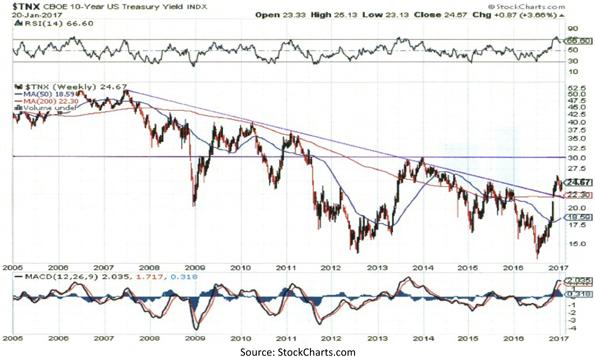…The green shoots of inflationary pressures are sprouting in our daily lives [and, as such, NOW is the time]…investors should be actively seeking out sectors that can realize rising revenues and profits because of the wave of price increases in goods and services that will be passed on to businesses and consumers.
[and, as such, NOW is the time]…investors should be actively seeking out sectors that can realize rising revenues and profits because of the wave of price increases in goods and services that will be passed on to businesses and consumers.
The comments above and below are excerpts from an article by Bryan Perry (navellier.com) which has been edited ([ ]) and abridged (…) to provide a fast & easy read.
Inflation presents special challenges to investors. Even if your investments are growing in value, inflation is still reducing that value on the back end, which is why investment returns must constantly be “adjusted for inflation” to reflect their real returns, so let’s look at an action plan that incorporates certain asset classes and market sectors that will benefit from what will likely be a forward inflation rate of 3% or so (depending on how fast the economy accelerates from a pro-business, pro-growth, Trump-fueled agenda).
Interest rates are coming off levels that are lower than a speed bump, but the bond market is ALWAYS way out in front of Fed policy and calendar data. It’s my view that any whiff of a strong fourth-quarter earnings season and a fast-track Congressional bill to cut corporate income taxes is going to be met with the 10-year Treasury yield rising to 3.0% by the end of February or quite possibly into the March FOMC meeting. A 3.0% yield represents a level not seen since early January, 2014. It is a major technical resistance level from when the economy appeared to be moving toward escape velocity before suffering another setback in growth, primarily related to the meltdown in the energy and other commodity sectors.

From the 12-year chart (above) of the 10-year Treasury Note yield, the blue lines represent where I believe the 10-year yield will pause as per the horizontal line, while the sloping (moving average) line shows what I believe is a clean upside technical breakout from a multi-year protracted downtrend that officially brought the bond rally to an abrupt end. If the old Wall Street saying “charts don’t lie” has any bearing, then it should provoke income investors to use this current pause to heed some fundamental advice – like “avoid long-term fixed income investments and emphasize growth in equity investments.”
No Time Like the Present for Making Changes
Repositioning is important if you think inflation is coming. This is especially true since inflation has been low or declining for at least the past three decades and any steps you can take to prepare in advance will pay off handsomely, especially over the long-term.
If stocks are not an asset class of choice for risk-intolerant investors, then by all means move into shorter-term alternatives, particularly money funds and Treasury Inflation Protected Securities, or TIPS, issued by the U.S. Treasury. They can be bought online through www.treasurydirect.gov in denominations as small as $100. They’re available in terms of 5, 10, and 30 years and pay interest twice annually. Each year the value is adjusted based on the Consumer Price Index (CPI). This gives you regular interest income, adjusted each year for the erosion from inflation.
Rates on TIPS are currently very low. The 10-year TIPS maturing on January 1, 2027 pays only 0.375% and the 30-year TIPS maturing on February 15, 2046 pays just 1.00%. It’s not much to live on, for sure, but aside from money markets it’s an ultra-safe place for parking capital if you are convinced inflation is a clear threat to interest rates. If waiting for bonds to mature seems like a long ordeal, I’ve written in prior updates about shortening bond maturities to 5-7 years as a sound path to maintaining decent yields.
For the majority of us – who need to grow our capital for maximum total returns – a better alternative is to invest primarily in growth-type stocks and funds. In that regard, I would emphasize dividend-paying stocks in sectors that are likely to benefit from inflation. These can include industrials, financials, energy, commodities, materials, chemicals, building materials, and technology.
Real estate is another excellent investment choice for inflation. I see real estate as the ultimate hard asset and it often sees its greatest price appreciation during periods of rising inflation. This is especially true since the use of real estate investment trusts (REITs) is the most liquid form of making real estate a place in your portfolio if you anticipate rising inflation as rents rise across the spectrum. REIT subsectors of choice include data centers, distribution & logistics, prime office, hotel and leisure, industrial, and manufacturing.
What’s interesting is that I’m not reading much about the topic of inflation in the media, at least not to an extent I find noteworthy. The old notion of super-low rates around the globe keeping U.S. rates lower for longer doesn’t square with ECB President Mario Draghi forwarding the idea of tapering back on QE in the Eurozone as early as April, even as the region braces for a “hard exit” by Britain. Growth rates for China, Japan, Germany, France, and the U.K. are all being revised higher in just the past week…
 munKNEE.com Your Key to Making Money
munKNEE.com Your Key to Making Money
I think real estate is the worst investment because of taxes, upkeep, insurance and the chance of being stuck with an underwater property. Real estate crushed my family wealth.
Any asset denominated in fiat currency is bad too. I see the only investments being gold and silver. There is nothing else and I am actually happy for that. I am also expecting the dollar to be worth nothing.